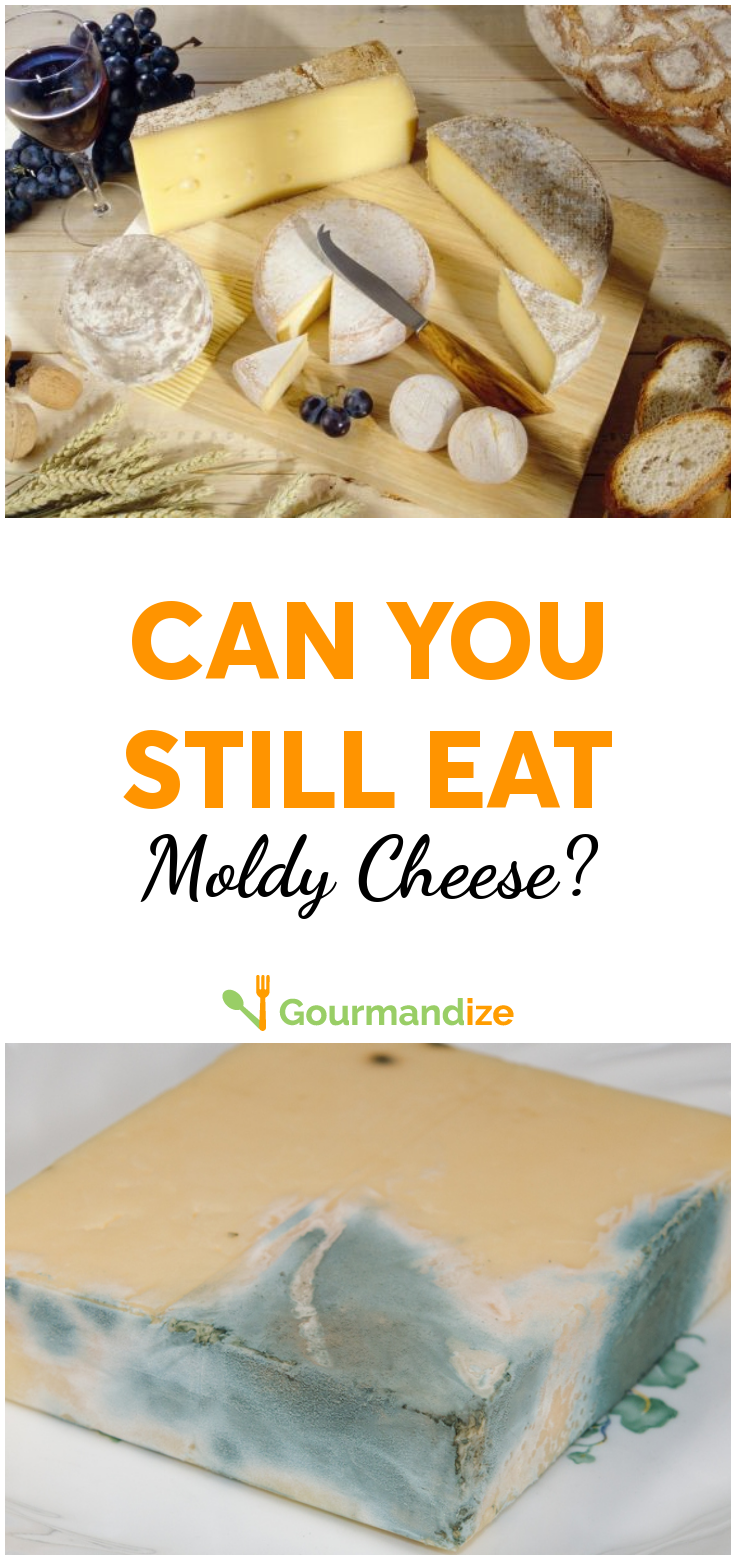Can You Still Eat Moldy Cheese?
Should you toss it or eat it anyways?

Wasting food is never fun... why would you want to throw money away?! But a moldy cheese is a tricky little issue: some cheeses (like blue cheese, brie and camembert) are made using cultured mold. So when should you attempt a rescue operation and when should you just throw the cheese out?
The trick is figuring out how deep the mold goes.
For soft cheeses, the little mold you see at the surface can be just the tip of the iceberg. Mold can send threads throughout the soft cheese, and along with it harmful bacteria like listeria, salmonella and E. coli, in a web throughout the cheese. Soft cheeses include cottage cheese, fresh mozzarella, and cream cheese — if you find mold on a soft cheese, throw it away! The same goes for sliced, grated or crumbled cheeses.
For hard and semisoft cheeses, mold can't penetrate very far into them. Delicately cut off a 1 inch chunk around the mold (making sure the knife doesn't cross-contimate by touching the mold), and chances are it's fine to eat.
Hungry for a cheese adventure? Check out these incredible cheeses from around the world!
More steaming articles
 25 fast beef dinners you can't mess up
25 fast beef dinners you can't mess up
 50 ways to make the most of summer...
50 ways to make the most of summer...
 10 habits that will make you a better...
10 habits that will make you a better...
Chef Tips and Tricks
You'll drool over this 3 cheese, bacon-wrapped baguette.
INGREDIENTS
- Blue cheese
- Cheddar cheese
- Mozarella
- 1 baguette
- Sun-dried tomatoes
- Bacon
METHOD
- Cut your cheeses into thin slices
- Slice baguette down the middle (like a sandwich)
- Layer cheddar, blue, and mozarella cheese inside the bread
- Top with sun-dried tomatoes
- Close baguette and wrap with bacon strips
- Put in oven and bake for 20 minutes at 350 degrees
- Slice and serve!



Comment on this article